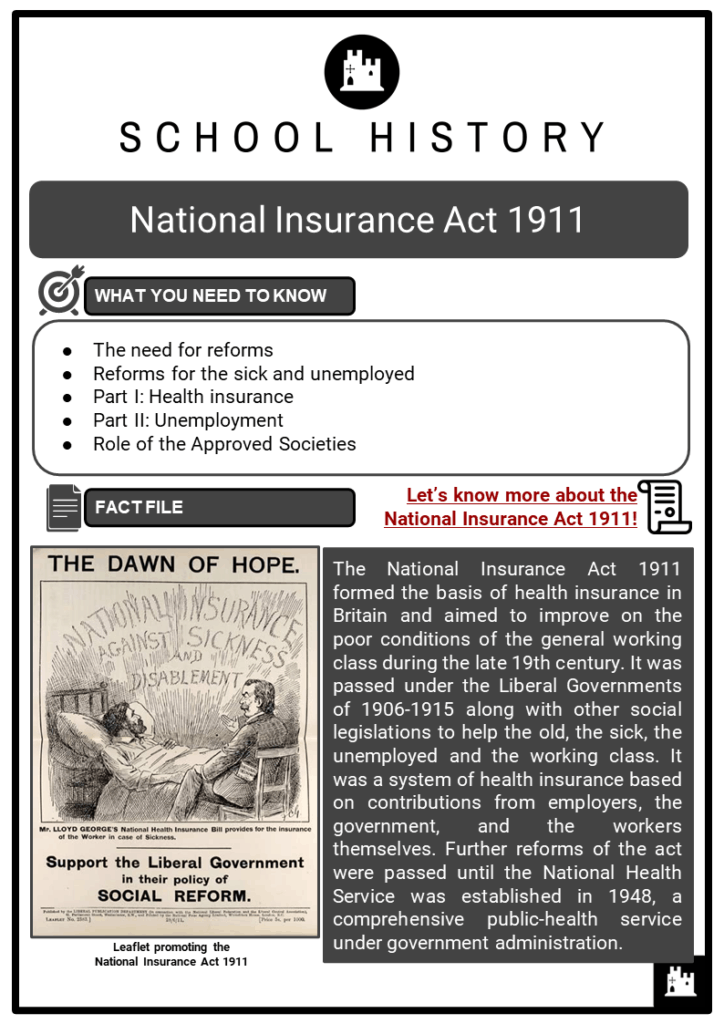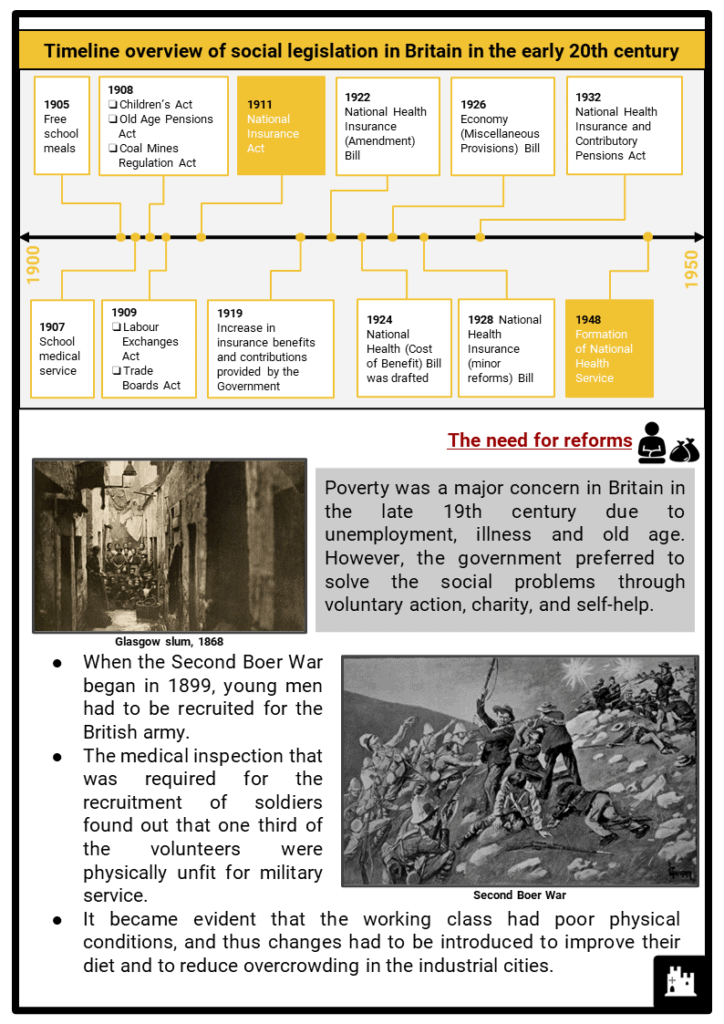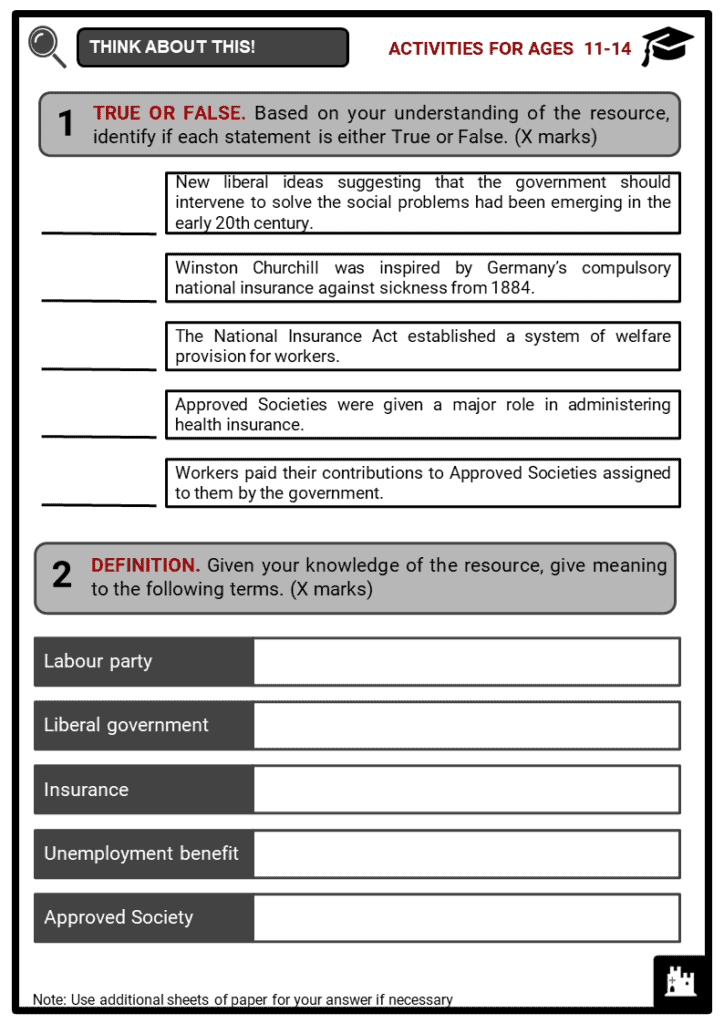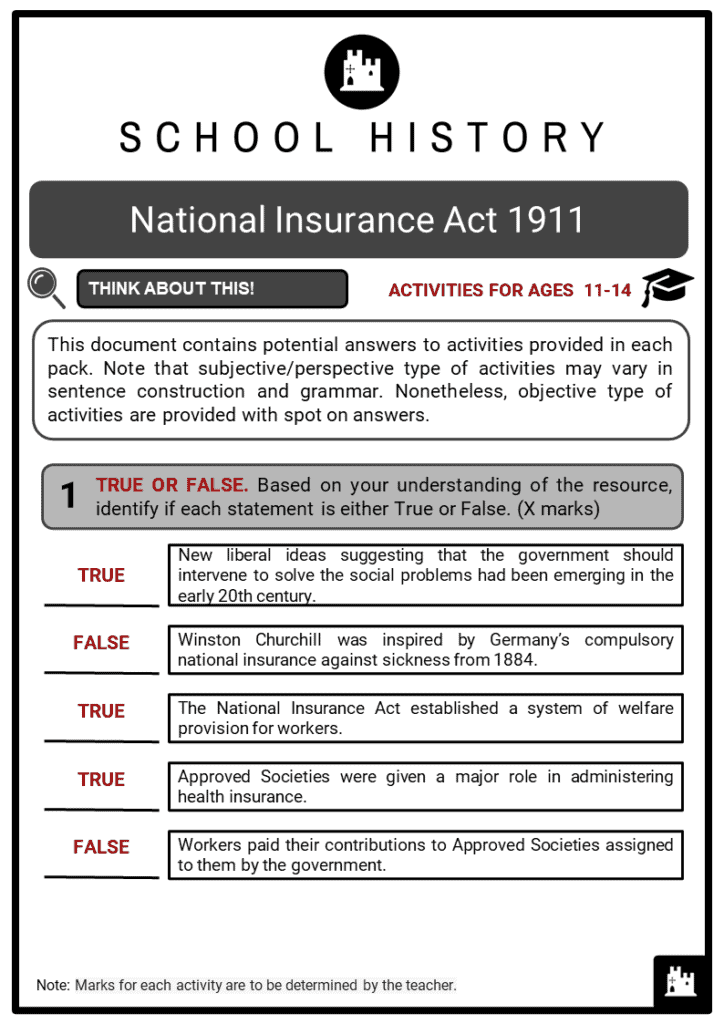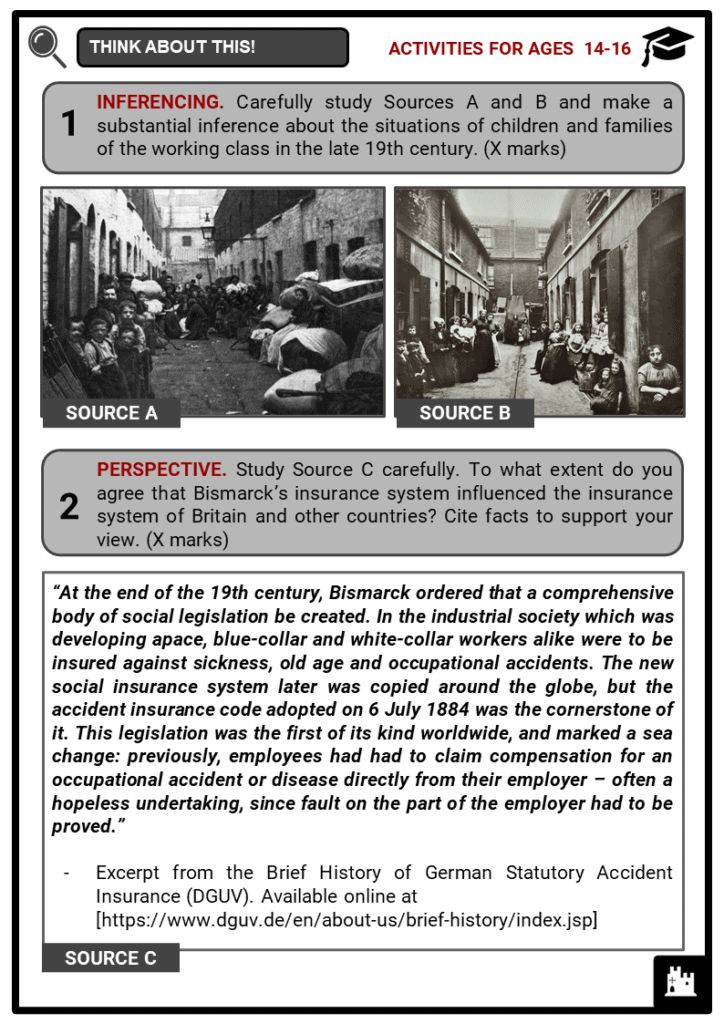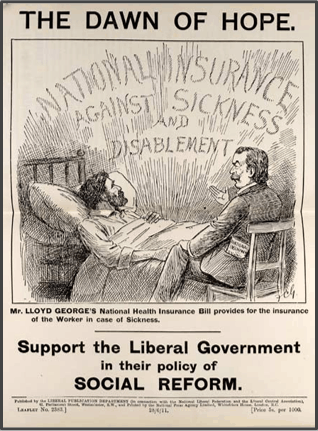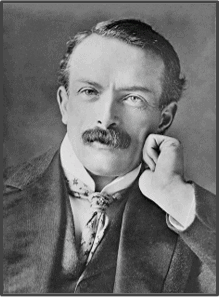Download National Insurance Act 1911 Worksheets
Do you want to save dozens of hours in time? Get your evenings and weekends back? Be able to teach National Insurance Act 1911 to your students?
Our worksheet bundle includes a fact file and printable worksheets and student activities. Perfect for both the classroom and homeschooling!
Table of Contents
Add a header to begin generating the table of contents
Summary
- The need for reforms
- Reforms for the sick and unemployed
- Part I: Health insurance
- Part II: Unemployment
- Role of the Approved Societies
Key Facts And Information
Let’s know more about the National Insurance Act 1911!
- The National Insurance Act 1911 formed the basis of health insurance in Britain and aimed to improve on the poor conditions of the general working class during the late 19th century. It was passed under the Liberal Governments of 1906-1915 along with other social legislations to help the old, the sick, the unemployed and the working class. It was a system of health insurance based on contributions from employers, the government, and the workers themselves. Further reforms of the act were passed until the National Health Service was established in 1948, a comprehensive public-health service under government administration.
The need for reforms
- Poverty was a major concern in Britain in the late 19th century due to unemployment, illness and old age. However, the government preferred to solve the social problems through voluntary action, charity, and self-help.
- When the Second Boer War began in 1899, young men had to be recruited for the British army.
- The medical inspection that was required for the recruitment of soldiers found out that one third of the volunteers were physically unfit for military service.
- It became evident that the working class had poor physical conditions, and thus changes had to be introduced to improve their diet and to reduce overcrowding in the industrial cities.
- When the Labour party was formed in 1900, the Liberal party was threatened and had to ensure the support of the working class by looking to help the poor.
- Additionally, new liberal ideas suggesting that the government should intervene to solve the social problems had been emerging at the time.
- The Liberal Government was elected in 1906 and was faced with social challenges after self-help seemed to be not working.
- It was first led by Henry Campbell- Bannerman who was then succeeded by H. H. Asquith.
- Reforms were passed by the Government to help the old, the sick, the unemployed, and the working class.
- They included the introduction of old age pensions, free school meals, labour exchanges, and the National Insurance among others.
Reforms for the sick and unemployed
- David Lloyd George, the Liberal Chancellor of the Exchequer, was inspired by Germany’s compulsory national insurance against sickness from 1884 under conservative Chancellor Otto von Bismarck. Whilst he initially suggested the National Insurance Act in his 1909 Budget speech, the passage of the act through parliament did not begin until after constitutional changes and the re-election of the Liberal Party.
- The National Insurance Act established a system of welfare provision for workers.
- It was the first contributory system of insurance against illness and unemployment but it only applied to wage earners - about 70% of the workforce.
- The National Insurance removed the need for unemployed workers to depend on the stigmatised social welfare provisions of the Poor Law.
- In some industries where work was irregular or cyclical, workers could claim unemployment benefits and would receive 7 shillings per week for up to 15 weeks in any financial year.
- Furthermore, workers would receive 10 shillings per week for the first 13 weeks of sickness.
- In case of longer absence, they would receive 5 shillings a week for a further 13 weeks.
- The act was extended in 1920 to cover unemployment benefits in additional industries.
- Reforms of the act were drafted until the National Health Service was formed in 1948, which incorporated National Insurance payments and benefits into a new centralized system.
Part I: Health insurance
- The National Insurance Act Part I introduced a National Insurance scheme with provision of medical benefits for workers.
- Successes
- The act provided compulsory health insurance for workers earning under £160 per year.
- Workers paid 4 pence, the employer paid 3 pence and the state paid 2 pence - to provide sickness benefit of 9 shillings.
- If a worker fell ill, 10 shillings would be given or up to 13 weeks then 5 shillings for an additional 13 weeks.
- The act offered free medical treatment including treatment for tuberculosis, and the sick were eligible for treatment by a panel doctor.
- It provided maternity benefit of 30 shillings.
- Limitations
- After 26 weeks' absence from work, the Poor Law had to provide for the worker
- There was no provision for the worker’s family and the unwaged.
- Many found that the contributions actually made poverty worse as they were paid less.
Part II: Unemployment
- The National Insurance Act Part II introduced time-limited unemployment benefit for specific highly cyclical industries.
- Successes
- A week after losing their job, insured workers would receive 7 shillings a week, for 15 weeks.
- Workers contributed 2.5d per week, employers paid 2d per week, and the state paid 3d per week.
- Many trades were involved such as shipbuilding, mechanical engineering, construction, iron founding and sawmilling. The scheme was compulsory for these trades.
- Limitations
- Coverage was time-limited, depending on contributions, after which the Poor Law had to be used.
- If the worker was fired for bad conduct, benefit was not provided.
- No provision was given for the worker’s family.
- Insurance was only available in certain trades, protecting only about 2 million workers
- It became too expensive for the Government after the First World War.
Role of the Approved Societies
- Funding came from the worker, employer and through general taxation. Insurance was collected by Approved Societies which played a significant role in the act.
- Some Approved Societies initially opposed the proposal because it was seen as a threat to their profits, but eventually they supported the reform after Lloyd George convinced them.
- Consequently, they were given a major role in administering health insurance.
- Any organisation including those created by Trade Unions, friendly societies and commercial insurers could become an Approved Society, as long as it complied with the Act's obligations and was registered under the Act.
- Worker could choose their preferred Approved Society, to which they would pay the contributions.
- Further Acts were passed and reduced the government contribution to the Fund.
- The Approved Societies were then left with the pressure to assume the financial burden.
- This, coupled with nominal profit that they received from the Fund, led to Approved Societies becoming virtually non-existent by 1940.
- The Societies were completely terminated with the creation of the National Health Service in 1948.
Image sources:
- https://upload.wikimedia.org/wikipedia/commons/8/8b/National-insurance-act-1911.jpg
- https://upload.wikimedia.org/wikipedia/commons/thumb/5/5d/Picture_of_Henry_Campbell-Bannerman.jpg/220px-Picture_of_Henry_Campbell-Bannerman.jpg
- https://upload.wikimedia.org/wikipedia/commons/d/d8/David_Lloyd_George_c1911.jpg

